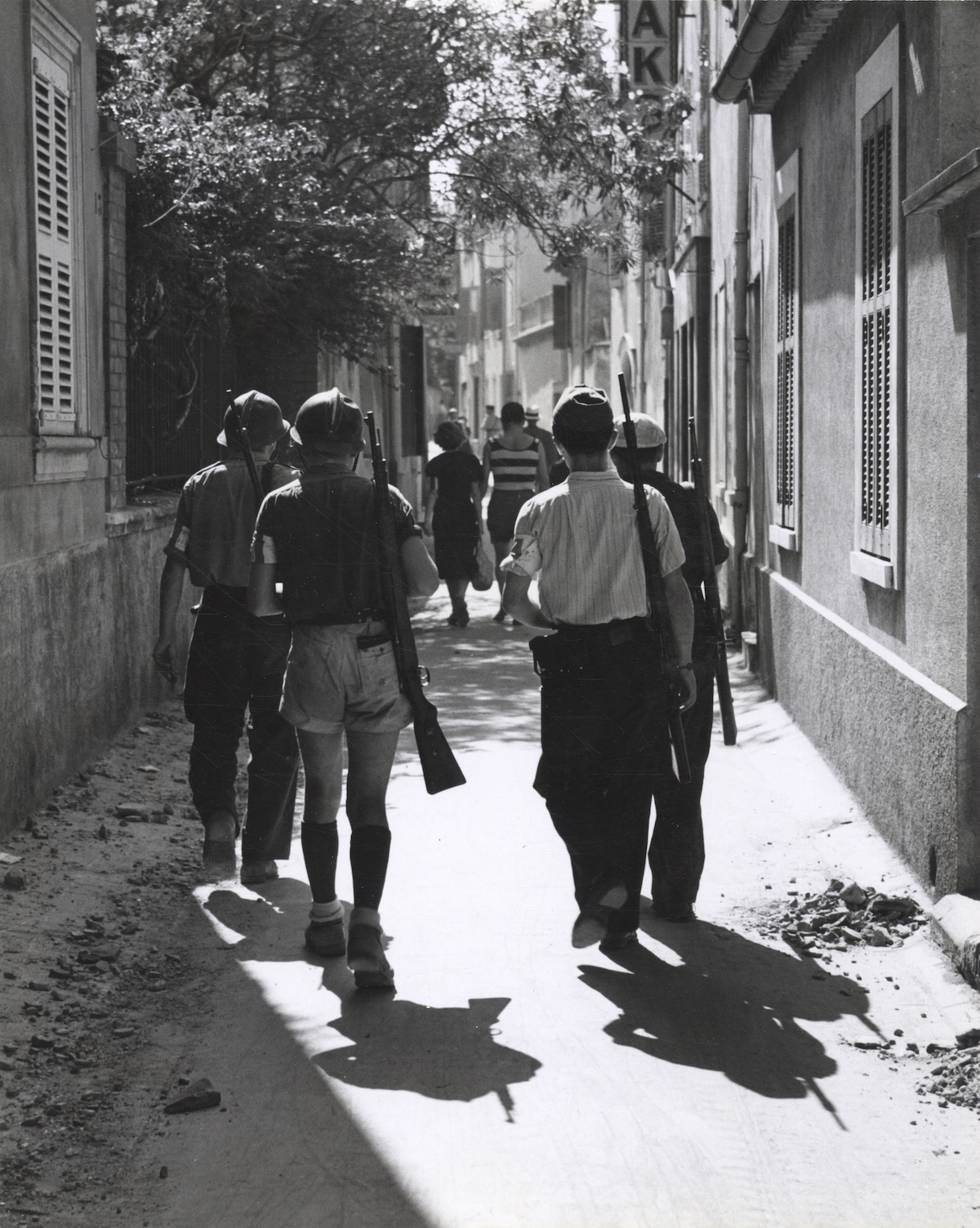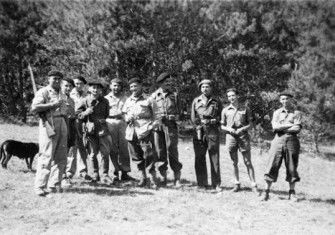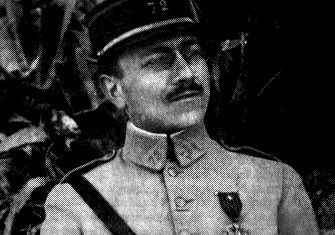D-Day and the French Resistance
Could the Allies have used the French Resistance to better effect before and after D-Day?

Having spent four bloody and bitter years inciting and encouraging armed resistance in occupied Europe, the Allies virtually ignored it as a significant factor in their plans for invasion and liberation.
Overlord, the operational plan for the invasion of Normandy in June 1944, was conceived by conventional military minds and designed for conventional military forces. Bombs, armour, parachutes, ships, shells and soldiers were ordered to solve the strategic and tactical problems – no part of the plan relied for its success upon the Resistance. Anything that might be achieved by local guerrilla operations was to be regarded simply as a welcome bonus.
On the other hand, after four years of humiliation and grinding occupation the French Resistance was in a determined mood and on the face of it seemed qualified to assume a leading role in the liberation of its soil. In January 1944, the various competing forces within the Resistance, including Gaullists and Communists, had patched up their differences to form the unified French Forces of the Interior (FFI). By May, it was estimated that about 100,000 armed men and women would go into action on orders from London; a further 40,000 armed Maquis were believed to be holed up in forests and mountains across the country. Secondly, Special Operations Executive (SOE), which had been set up in Britain in 1940 to co-ordinate and encourage armed resistance to the Axis powers throughout the occupied world, had by 1944 managed to establish a number of well-organised networks in France. SOE successes had included numerous sabotage attacks on power plants, armaments and components factories, railways, the canal system, supply dumps and enemy personnel. Thirdly, the Resistance had drawn up and submitted in the summer of 1943 a comprehensive plan for seven co-ordinated operations to be mounted in conjunction with the invasion. These included attacks on railways, German road movements, telecommunications, munition dumps, oil fuel installations, enemy headquarters and railway turntables. Finally, thanks to SOE's persistence and Churchill's direct intervention, there was a massive increase from February 1944 in the number of supply drops to resistance groups. By June 1944, thousands of brave and dedicated Frenchmen and women were only waiting for the signal to redeem their national honour.
The Allied planners, however, took a somewhat different view. There was no place for national sentiment when it came to detailing one of the most complex military operations in the history of warfare. They demanded precision and secrecy – the Resistance could guarantee neither. To begin with it was extremely difficult to calculate the strength and quality of FFI units. The co-ordination and execution of any complex plan was virtually impossible given that communications between many groups were at best tenuous, and with London non-existent. Secondly, deep and lingering political differences within the FFI made co-operation between individual units a tricky and unpredictable business. Thirdly, in spite of the increased air drops, it was clear that only a comparatively small number of units had enough ammunition for more than a day's hard fighting. Bazookas and anti-tank rifles were the heaviest weapons available; short-range communication equipment, essential for small unit operations, was virtually unheard of. Fourthly, unlike Tito's guerrilla army in Yugoslavia, the French Resistance had no experience of extensive field operations. Similarly, there was no guarantee that a full-scale sabotage campaign against the enemy's strategic communications network of roads, bridges, railways, marshalling yards, telecommunications and HQs would, on its own, achieve the results necessary to ensure the success of the Allied landing. Finally, if the Resistance was to be a component of the invasion plan, then disclosure of details concerning the place and timing of the landings would be essential. The Allies were not prepared to take the risk, and even General de Gaulle remained in ignorance until the morning of the assault.
Deprived of a strategic role and kept in the dark as to what was going on the French Resistance could only sit and wait for the invasion. This, however, was to be the signal for a national uprising which everyone agreed would cause a great deal of random havoc and dislocation for the Germans both on D-Day and during the fragile build-up period in the beachhead. To co-ordinate and stiffen local uprisings, 'Jedburghs' – small inter-Allied, three-man teams – as well as Special Air Service troops and American 'Operational Groups' were dropped behind enemy lines from D-Day onwards.
The Allies certainly got their bonus and more besides. Sabotage teams supported by the railways' trade union – one of the best organised elements within the Resistance – combined to disrupt the movement of German reinforcements towards the Normandy battlefield. Widespread attacks on road and telephone communications aggravated the disruption, and hampered enemy regrouping after the Allied break-out. Later, the Maquis harrassed the German retreat and helped in mopping-up operations. It was indicative of the extent to which the German High Command had been unhinged by the uprising that the crack 2nd SS Panzer Division, 'Das Reich', was diverted onto counter-guerrilla operations in the Dordogne instead of being rushed north to the real battle. Even when the division was belatedly ordered to Normandy its progress was further delayed by incessant guerrilla attacks. Tragically, the villagers of Oradoursur-Glane near Limoges paid the price of German frustration and French provocation. 'Das Reich ' troops massacred all the men, women and children they could find and then razed the village.
It has been argued that the delay of the 'Das Reich' was a decisive contribution to Allied victory. If, the argument runs, such a powerful armoured division had been fed into the Normandy battle in mid-June, when the beachhead was at its most vulnerable, the Allies might have been thrown back into the Channel. Once again, it is interesting to speculate on another decisive 'if' of military history. However, the hard facts seem to indicate that OVERLORD's success was built on traditional military virtues – thorough planning, intricate deception, the skilled handling of troops, the neutralisation of the Luftwaffe, the bombing of strategic communications and unexpected enemy blunders. The scale, aims and weapons of modern warfare not only made the contribution of a single armoured division seem insignificant, but they also severely diminished the value of guerrilla operations.
Nowadays, it is easy to be dazzled by the guerrilla's battle honours – the Arab Revolt, China, Indo-China, Algeria, Cuba, Mozambique, Nicaragua – the list is quite impressive. Guerrilla operations have often favoured the morally strong but materially weak; limited actions such as sabotage, subversion, assassination and ambushes enabling the inferior side to seize the military initiative from conventional forces. However, the political and military conditions have to be right. During the Second World War, fought out between the fully mobilised resources of powerfully industrialised nations, the contribution of the guerrilla to ultimate victory tended to be marginal. In the context of a global war, his objectives were usually local, whilst the success of his operations was entirely conditional upon the extent to which they were allowed to form part of the overall strategy and tactics of conventional, allied forces. Even within these dampening limitations the prospects for guerrilla warfare in Occupied Europe were gloomy. With only one exception, the armed resistance movements all lacked the essential prerequisites for a successful guerrilla campaign – central co-ordination, a secure operational base and a steady and plentiful supply of arms, ammunition, equipment and medicines from an outside source. The exception was Tito's Communist National Liberation Movement in Yugoslavia.
Here, the inhospitable and mountainous terrain, ideally suited to a classic guerrilla campaign, enabled Tito to establish a relatively secure base. Secondly, Tito came out on top in a series of bloody clashes with a rival resistance army led by the monarchist Colonel Draka Mihailovic. Disassociating himself from the Royal Yugoslav Government-in-exile, Tito set up a National Liberation Council with the powers of a provisional government, leaving him as undisputed political and military leader of the Yugoslav Resistance. Finally, massive quantities of weapons and equipment, including aircraft, tanks and vehicles were injected by the British and Americans during 1943 and 1944. In the Allies' view, the Yugoslav Resistance movement had won its spurs and was eligible to play a part in their Mediterranean strategy. A strong partisan army in Yugoslavia not only made the going easier for the Allies in Italy by drawing off enemy forces, it also posed a serious threat to Germany's strategic oil resources in Rumania.
The Yugoslav Resistance movement was unique then on a number of counts – it played a central part in expelling the Germans from its soil; it formed a cohesive military force which was regarded by the Allies as an element of their strategic planning; and, lastly, it was the political inspiration and basis for a new, independent post-war state.
It would be misleading, however, to assess the military contribution of European resistance purely in terms of guerrilla warfare. For example, 3,500 downed Allied aircrew got back safely thanks to British-organised but locally-run escape lines in Holland, Belgium and France. Of even greater importance to the Allies were the intelligence-gathering activities of the Resistance. There was very little which Allied planners did not know about the weapons, numbers, movements and dispositions of their enemy. In May 1944, over 3,500 reports were radioed from France; this was in addition to the details and plans of the Atlantic Wall already smuggled out. Resistance workers as far apart as Poland and France supplied invaluable information about the construction of V1 rockets and the location of their launching sites. Throughout the war, the Belgian intelligence network code-named 'Clarence' regularly sent back to Britain a wide variety of reports on subjects ranging from the names and addresses of collaborators to details of top secret German radar sites. Such meticulous and exhaustive accumulation of vital information was probably a more decisive contribution to Allied victory than the uncoordinated and random operations of Resistance guerrillas.
However, to find the real achievement of Resistance, we have to look no further than our modern Western democracies. 'Stop Cruise', 'No To London's Third Airport', 'Nuclear Power? No Thanks' – today we take for granted the right of the individual to protest across a wide range of moral, political, social, economic and environmental issues. The re-routing of motorways; the introduction of laws against racial and sexual discrimination; and in the case of the USA's involvement in Vietnam, the reconsideration of state policy, all testify to the effectiveness of organised protest as a force for change from within democratic society. This is a further phase in a process of political development which has been going on in Western Europe since the French Revolution; a process which has brought Europeans, both as individuals and nations, greater involvement in political decision-making and greater responsibility for the actions of their state.
European Resistance was a product of this process and it is therefore within the longer perspective of the political and moral liberation of Western Europe that its lasting contribution is to be found.
Resistance to the ideological principles upon which Nazi totalitarian society was based had already existed to some degree in Europe before the outbreak of the Second World War. In those countries defeated and occupied by Germany during the war there also grew up a spirit of national resistance which refused to accept the imposition of foreign control. These two distinct strands in European Resistance brought together many diverse views and backgrounds Catholics and Protestants, monarchists and Communists, workers and bourgeoisie, intellectuals and criminals. Such diversity did account for many of the wrangles and bloody internal struggles which from time to time paralysed some movements. However, all were united in their moral rejection of Nazi government and the form of life it imposed.
In defeat, the Resistance Movements helped to restore national self-respect; in victory, they staked their moral claim to a role in determining the shape of post-war society. In France, for example, leading members of the Resistance quickly filled the gaps in local administration left by collaborators and Vichy officials. The Allied Civil Affairs officers who followed in the wake of the advancing armies soon found that the French Resistance was able to produce effective civil administration on a wide scale. This helped to ease the potentially difficult transition from war and occupation to peace and self-government. It was also a clear signal to the Allies that after four years of resistance to occupation, further outside political interference would be equally unwelcome. Of course, the transition did not go so smoothly everywhere. For example, Poland found herself under the steel grip of a new occupier – Russia; and in Greece the British used force of arms to prevent the Communist resistance movement from taking power.
In the democracies of Western Europe, however, many former members of the Resistance moved into positions of prominence in both local and national government. Yet, these were men and women. who during the war had opted, for reasons of conscience, to live outside the rule of law, albeit the law of Nazis and collaborators. Thus, in the post-war world, resistance – the freedom of the individual to fight against laws, policies and forms of government which he or she regards as morally repugnant – achieved political recognition and social respectability. It was difficult for former resistants now in government, as well as countries such as Britain and the USA which had fostered resistance movements, to deny freedom of peaceful protest and civil resistance to others.
The example and experience of resistance movements in countries such as Belgium, Holland, Denmark and Norway had also demonstrated the strength of organised protest and unarmed resistance. Propaganda, the underground press, strikes, demonstrations and obstruction had proved highly effective and difficult to counter. In all of these countries there had grown up a widespread and well-informed spirit of resistance. People were united and committed to resist without being exposed to many of the personal dangers, indiscriminate enemy reprisals and bitter internal strife which were so often the products of armed resistance. Since 1945, the techniques of passive resistance learnt during the war have been used by protest groups of all political shades to publicise their views, marshal like opinion and advance their cause.
Resistance got people thinking about their political responsibilities. It brought home to them that voting every four or five years was not the only way in which they could participate in shaping and defining their society. Above all, it emphasised that it was they who shouldered the ultimate responsibility for preserving and working towards the improvement of that society. This was the real contribution of Resistance to the Liberation of Europe.






